How AFL academy wars could be solved — and what it means for your club
As debate rages over the AFL’s next generation academies, a possible solution has been flagged. Read what it means for your club.
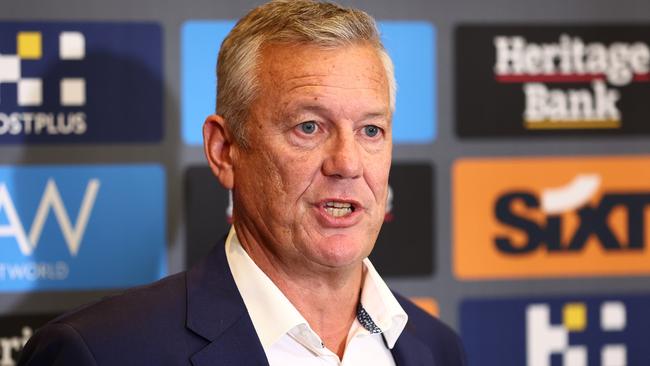
AFL
Don't miss out on the headlines from AFL. Followed categories will be added to My News.
The Gold Coast Suns have called on the AFL to give heartland clubs more scope to take next generation academy players inside the first 40 picks of the draft.
Victorian clubs are angry they have been handcuffed by a rule to prevent them from taking academy players in the top-40 while northern clubs, such as the Suns, have free rein on local stars.
Suns boss Mark Evans told the Herald Sun there should be more incentive for Victorian, South Australian and Western Australian clubs following an outcry over the lack of NGA returns in this year’s draft.
While Gold Coast hit the jackpot, taking four stars inside the first round of the national draft, Hawthorn (Tew Jiath), Western Bulldogs (Luamon Lual), West Coast (Lance Collard) and Fremantle (Mitch Edwards) all missed out on their academy targets.
Evans strongly defended the Suns’ academy program, saying it was crucial for the game’s overall health as the AFL begun a review of the league’s list management mechanisms.
But Evans, who was at the AFL when the NGA system was introduced, said the top-40 cap on heartland clubs should be reduced to give them more bang for buck.
The top-40 cap was introduced after Western Bulldogs landed Jamarra Ugle-Hagan with pick one in 2020, but there is a push to reduce the protected zone to top-20.
“We should provide more incentive to clubs who are running NGAs,” Evans said.
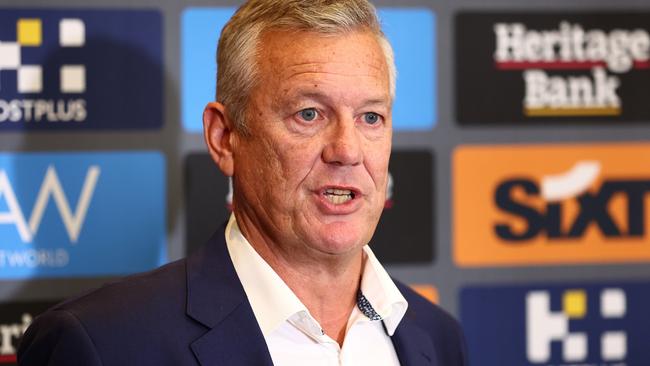
“We changed the system because we felt Jamarra and the Western Bulldogs was too much of an advantage. The competition had an issue with that.
“But maybe there is not enough advantage in the system at the moment outside pick 40.
“It could easily come down.”
Evans said the huge amount of interstate talent on the club’s list left the Suns vulnerable to poaching raids, but he was optimistic the tide was turning.
“One of the ways we can compete with that is to produce more talented kids in our own backyard so we minimise that go-home factor,” Evans said.
GWS football boss Jason McCartney said the northern states’ clubs faced a huge fight against other sports including rugby league and union, soccer and cricket to sign top talent.
Sydney academy prospect Mitchell Woods this week signed a five-year deal with NRL club Canterbury.
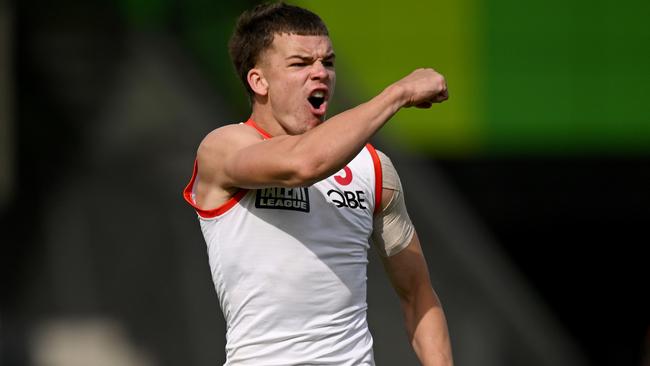
“We are competing in a market that is highly populated by other sports which can sign these athletes to contracts from age 12,” McCartney said.
“So we need to sell a dream to them in the academy and we can’t have too many impediments around it.”
McCartney said the AFL should be careful to protect the northern states’ academies in the face of rival club scrutiny.
He said the impact of disbanding the northern academies entirely would be “enormous” for the code.
“Some of the commentary I find a little bit disappointing and I think it comes back to a lack of understanding broadly how much work goes in behind the scenes,” McCartney said.
“It is all cyclic and one year you can have four good players (from the academy) and others you can have one at the back end (like GWS this year).
“So I felt for Gold Coast because they have been in the competition for 13 years and haven’t made finals once and they look like getting some local talent in and everyone wants to rip the system apart.
“The implications can be significant if you pull back in one area (of list management) and there is a ripple effect.”
WHY NORTHERN STATE CLUBS ARE LAUGHING AT AFL’S HEARTLAND
Laura Kane’s mouse will hover over one of the most important decisions the game faces.
In the spaghetti bowl of list management conundrums in football, things have hardly ever been more contentious and complex regarding academy rules, father-son selections, special assistance compensation packages and free agency domination.
In an era where the AFL has desperately tried to level the playing field under the equalisation banner, football’s list management battleground has become lumpier than your pop’s custard.
And this week, the trench lines were dug even deeper as the sun finally started to rise on the Gold Coast Football Club which hasn’t won so much as a chook raffle in 13 years in the AFL.
When the phone calls flew around on Monday afternoon between Victoria’s list managers, the war cry was put out – don’t bid on any of the Suns’ four academy stars in an attempt to make a mockery of the academy system some believed was broken away.
And now as part of the AFL’s review into the competitive balance and list management mechanisms, clubs from footy’s heartland states want northern club academies stripped of their 20 per cent discount, or equal rights in their own next generation academies.
It means northern-states would pay a steeper price for academy jets such as Jed Walter, Ethan Read, Jake Rogers and Will Graham, who were this week likened to West Coast premiership greats Josh Kennedy, Dean Cox and Daniel Kerr.

While the four northern clubs have free rein on their local stars – the 14 other clubs with next generation academies can’t take any of their own inside the first 40 picks.
That part of it, said one list manager this week, was “a debacle staring the entire game in the face”.
But club officials from the northern academies openly laugh at what they label “blatant hypocrisy” from the heartland states.
The franchise clubs are routinely lambasted for losing interstate talents at trade time, and then when they finally begin to develop stars from their own backyard, emergency flares are shot up over the game.
Meanwhile, Western Bulldogs this week quietly pocketed another father-son key position player – Jordan Croft – as part of a golden pipeline which in recent years has included pick two Sam Darcy, premiership onballer Tom Liberatore, Mitch Wallis and Rhylee West.
Plus, there’s the Framlingham academy star who led to huge change in the next generation academy system – pick one Jamarra Ugle-Hagan.
North Melbourne in September also received another three first-round draft picks as special assistance and will next year start the 2024 season with 17 first-round draft picks on their list.
Collingwood also hit the father-son jackpot nabbing premiership captain Darcy Moore and Nick Daicos, who one senior official said this week “could be one of the greatest players of the modern era”.
Yet in blunt terms, Suns’ officials this week questioned why the grenades were being lobbed at Gold Coast at the end of one of the game’s most dismal eras which has averaged six wins a season over 13 years, featured zero finals appearances and in September led to the club’s fourth coach – Damien Hardwick.
Pot meet kettle, the Suns said.
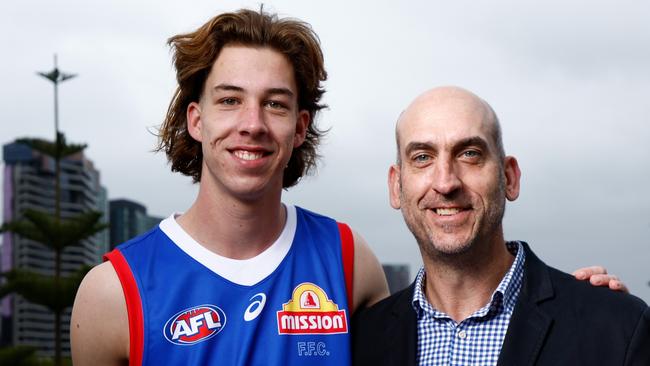
Similarly the battle for the GWS Giants is a long way from being won.
GWS has had considerably more success on the field than the Suns, after this year falling one point short of premiers Collingwood in the preliminary final.
But there is another big difference.
The game is flying so much in South–East Queensland in juniors that the region has outpaced South Australia at grassroots level, and in the words of Suns’ chief executive Mark Evans “we are starting to chase down the NRL for participation in Queensland”.
Compare that to GWS where it has only two players from Western Sydney – James Peatling and Kieren Briggs – on its list.
And its attendances this year – even with free four-for-one ticket giveaways throughout the season – were alarming.
COVID-19 had a huge impact on the club’s momentum in the area.
And without New South Wales talent on the list, the Giants have in the past had to pay ridiculous money for top-end or even middling players and then face the consequences when it is time to correct the salary cap.
Compare that to the Geelong Cats whose annual turnover of Geelong Falcons players and other locals is up there with the soaring interest rates.
And then when it comes to the free agency race, the big Melbourne clubs clearly hold the aces. The welcome mats are out everywhere for Ben King, who is adamant he is staying up north.
So, the frustrations in the game’s list management space are at an all-time high, and as Evans said this week “it is a lot easier to stay at the top than it is to rise up from the bottom”.
Big tweaks, such as pick purchasing, a mid-season trade period and certainly the academy, are coming to help restore some evenness to the game without having to hand out three first-round draft picks to help a smaller club compete.
From that perspective, the biggest winner of this year’s draft has to be the AFL.
Two of its worst-performed clubs, the Suns and Roos, had four of the first nine players picked in last week’s draft, and nine of the first 26.
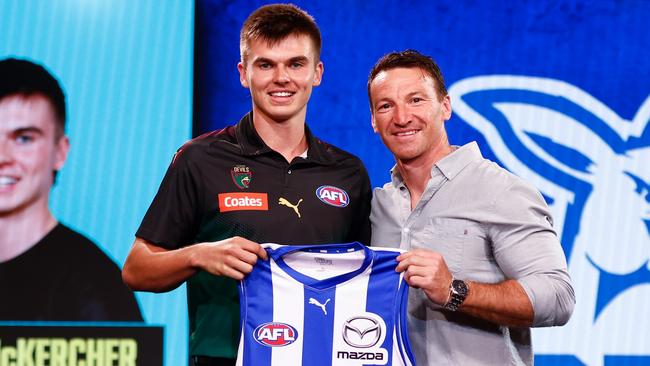
That’s 34.6 per cent of the top 26 talents funnelled to two clubs. An extraordinary return.
West Coast chose to have only one in the first round – Harley Reid – after knocking back multiple first-round picks for the top choice – and missed out on academy star Lance Collard (pick 28 to St Kilda).
The Suns, who ended Stuart Dew’s contract with one year to run to appoint Hardwick, are optimistic the club is in a much a better place now than when it lost co-captains Tom Lynch and Steven May in 2018, and effectively had to start all over again.
So the needle is moving for the Suns. But now the headwinds of a different kind have whipped up as rival clubs question – and try to change – the academy system.
Evans is adamant the northern academies are crucial to the whole health of the game, not just the Suns, Giants, Swans and Lions.
“If northern academies get kids and their families connected to the sport and add to the talent pool and Gold Coast enjoys the benefits of having homegrown players, it should be applauded,” Evans said.
“The traditional (footy) states have great depth of community footy and coaching and private school programs and better talent competitions than our regions.
“So the programs for those more talented kids in the northern states are delivered by the academies. If the academies don’t run, then those kids will focus on other sports.
“So what it really means is the debate should be about the system and the ways clubs can obtain academy players to their list.
“It is OK to review that in my opinion, but any review must be completed through a wider lens of competitive balance and the total ocean of advantage and disadvantage in the AFL.
“In reality, there are very few genuine advantages for cubs in an expansion market.
“You’ve got the go-home factor, the father-sons, attracting free agents and trades if you are in the lower half of the ladder, the salary cap, bigger crowds, better stadiums, home advantage in a grand final, travel and the fixture.
“So, if you want to look at competitive advantage in its totality, we have to throw all of those factors into the mix, and some of them you might not be able to change.
“We should always review and chase something that is better.”
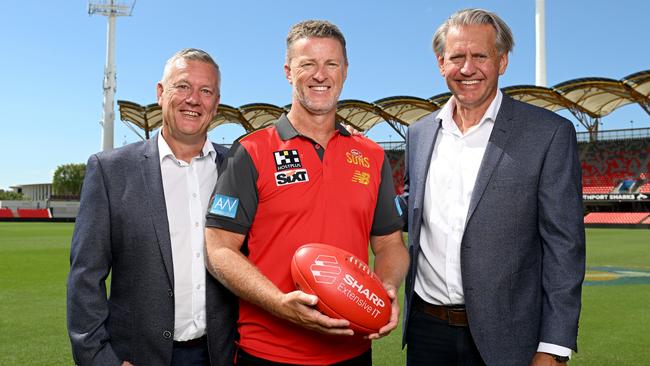
In essence, would the Victorian clubs be happy to wind back the northern academies, or remove their 20 per cent discount for Walter for example, if the father-sons are more restricted?
Or if the grand final was moved every second year? That won’t happen, but the Suns’ point is valid. They’re up against it.
So are the Giants for their crowd numbers. The cost of living in Sydney is a huge factor for the Swans. The Cost of Living Allowance was removed and the club temporarily banned from trading.
To say it remains a sore point is an understatement.
But the Andrew Dillon era has arrived.
The AFL’s new chief executive brought in Round zero to start the season in the northern states.
The game needs a kick-along rather than another set of handcuffs north of the Murray River, those clubs say.
Fifteen of the last 17 premiership teams are Victorian.
In 2016, GWS lost the Albury and Murray River region from its academy zone amid searing pressure from Victorian clubs to water down the franchise club’s advantages.
Former Collingwood president Eddie McGuire was on a rampage at the time.
Yet the Giants continue to whack away in regional parts of New South Wales to not only grow the game, but find the needle in the haystack in terms of top-tier talent.
The club spends upwards of $1.7 million a year on its academy program to operate, setting up satellite footy bases in Broken Hill, Blacktown, Canberra, Wagga Wagga and Albury to run clinics and programs.
This week, the club was responsible for one of the biggest surprises of the draft, taking lively forward Phoenix Gothard at pick 12, when some rivals didn’t have him in their top-30.
Perhaps unsurprisingly, the athletic forward is from New South Wales, which is part of why he was the best fit rather than the best available.
Best fit for the club and the game style. It was brave recruiting.
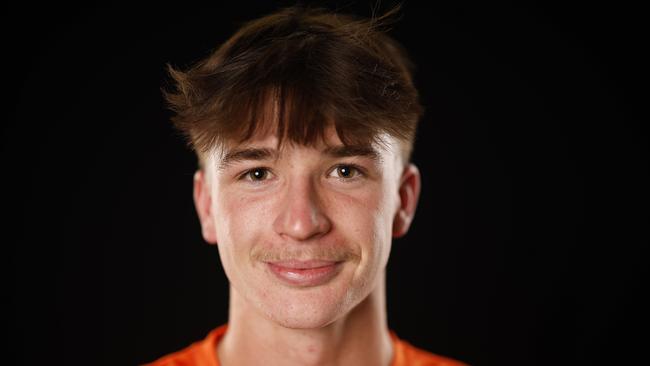
Football manager Jason McCartney said he was bemused by some of the commentary this week at Gold Coast’s academy kids, knowing full well the fight the northern clubs face.
“The academies are crucial for us for a number of reasons but clearly the retention piece is a big one, because everyone has seen what we have had to do in the past few trade periods,” he said.
“You look at the Victorian clubs, they have a high percentage of local Victorian talent on their lists.
“We need more New South Wales players on our list. We have three players from Sydney.
“That means the other 41 players have moved to play footy for us.
“So what you are dealing with every year is other clubs targeting those Victorian and interstate boys on our list to go home.
“And we just don’t have that coming back the other way.
“There are not enough New South Wales players in the competition that we can target in a trade or free agency scenario coming back home.
“So they (academies) are playing an important role, but the reality is we are only just scratching the surface, there is still a long way to go and a lot of work to be done.”





